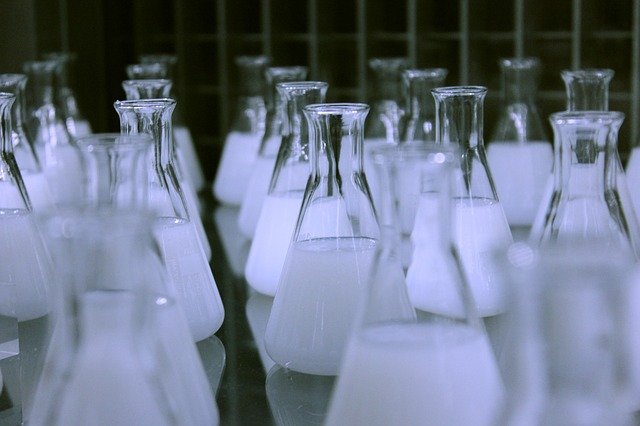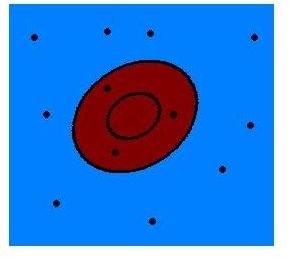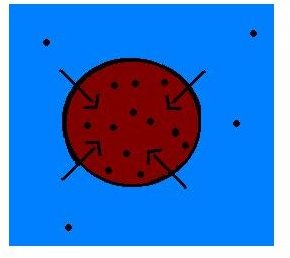Understanding Hypotonic, Hypertonic, and Isotonic Solutions
Definitions of Solutes and Solutions
Solutions are compositions that have two or more substances that are equally distributed within the mixture. In one sense, all solutions are a type of homogeneous mixture, in which the two or more substances are the same throughout. For example, when sugar is mixed in water, it becomes impossible to physically see the sugar because has completely dissolved into the water. [caption id=“attachment_130803” align=“aligncenter” width=“640”] Hypotonic, Hypertonic and isotonic solutions are all important to life[/caption] Regarding terminology, the sugar that was dissolving into the water is known as a solute. Anything is that being dissolved is called a solute, while the solvent is the thing that dissolves the solute. In this case, the water would be the solvent, and usually, there is more solvent than the solute. Lastly, the system is what holds the solute and solvent together. In the last example, the glass would be the system. Now hypotonic, hypertonic, and isotonic solutions usually deal with cellular osmosis which diffuses over a selectively permeable membrane. Osmosis is the movement of water and tends to diffuse by moving the water from areas of higher concentrations to areas of lower concentrations. Lastly, a selectively permeable membrane can restrict what comes in and out of the membrane. In terms of tonicity, depending on the solutes and the solvents determines hypotonic, hypertonic, and isotonic solutions. But what are isotonic solutions and what is the difference of hypotonic vs hypertonic? Keep reading!
Hypotonic, Hypertonic and isotonic solutions are all important to life[/caption] Regarding terminology, the sugar that was dissolving into the water is known as a solute. Anything is that being dissolved is called a solute, while the solvent is the thing that dissolves the solute. In this case, the water would be the solvent, and usually, there is more solvent than the solute. Lastly, the system is what holds the solute and solvent together. In the last example, the glass would be the system. Now hypotonic, hypertonic, and isotonic solutions usually deal with cellular osmosis which diffuses over a selectively permeable membrane. Osmosis is the movement of water and tends to diffuse by moving the water from areas of higher concentrations to areas of lower concentrations. Lastly, a selectively permeable membrane can restrict what comes in and out of the membrane. In terms of tonicity, depending on the solutes and the solvents determines hypotonic, hypertonic, and isotonic solutions. But what are isotonic solutions and what is the difference of hypotonic vs hypertonic? Keep reading!
Isotonic Solutions
[caption id="" align=“aligncenter” width=“600”] Isotonic Solution where the solution is in balance[/caption]
Isotonic Solution where the solution is in balance[/caption]
The easiest solution to understand is isotonic solutions. In terms of cells placed in water, they neither gain or lose water through osmosis because the concentration of solutes in the cell is equal to the solutes outside of the selectively permeable membrane. As a result, nothing happens because the concentration of water solutes outside of the cell is equal to the solutes within the cell. In the same respect, the water concentration on both sides is also equivalent. Isotonic solutions are commonly used in medical situations. For example, hospitals use isotonic saline solutions for IVs for patients. If you clean contact lenses, you use an isotonic saline solution to clean the protein from your lenses. Most cells in our bodies are isotonic.
Hypertonic Solutions
Hypertonic solutions are different from isotonic solutions in that cells often lose water. Cells have a water concentration that is greater inside the cell rather than outside of the cell. Furthermore, the solutes outside of the cell are greater than the solutes inside of the cell.
[caption id="" align=“aligncenter” width=“600”] Hypertonic have more water in the cells surrounding solution[/caption]
Hypertonic have more water in the cells surrounding solution[/caption]
When osmosis uses diffusion, cells tend to lose water because the water travels from an area of high concentration (inside of the cell) to an area of lower concentration (outside of the cell). When this happens, cells can become dehydrated and die unless they are properly hydrated. The best example of a hypertonic solution would be the oceans because the solutes (salts) outside of the cells are greater than inside of the cells. For example, if you swim in an ocean, you can observe that your body tends to dry out due to the solvent (ocean) having a greater amount of solutes than the inside of your body.
Hypotonic Solutions
[caption id="" align=“aligncenter” width=“600”] Hypotonic solutions have more water outside[/caption]
Hypotonic solutions have more water outside[/caption]
Hypotonic solutions are the complete opposite of hypertonic solutions. Cells often have a water concentration that is lower than outside of the cell. Following this, the solutes outside of the cell are less than the solutes within the cell. As a result of diffusion, cells tend to gain water because the water travels from an area of higher concentration (outside of the cell) to an area of lower concentration (inside of the cell). When cells gain water, they risk rupturing unless they maintain this balance (through a selectively permeable membrane). Freshwater habitats are examples of hypotonic solutions because the freshwater has fewer solutes than inside of the cells. For example, if you stay in the shower too long, you will notice that your skin can gain water and this is often called pruning. In conclusion, hypotonic, hypertonic, and isotonic solutions are a part of everyday life. Without these solutions, sea animals, freshwater animals, and medical patients could not survive.
References
Sources:
Images: